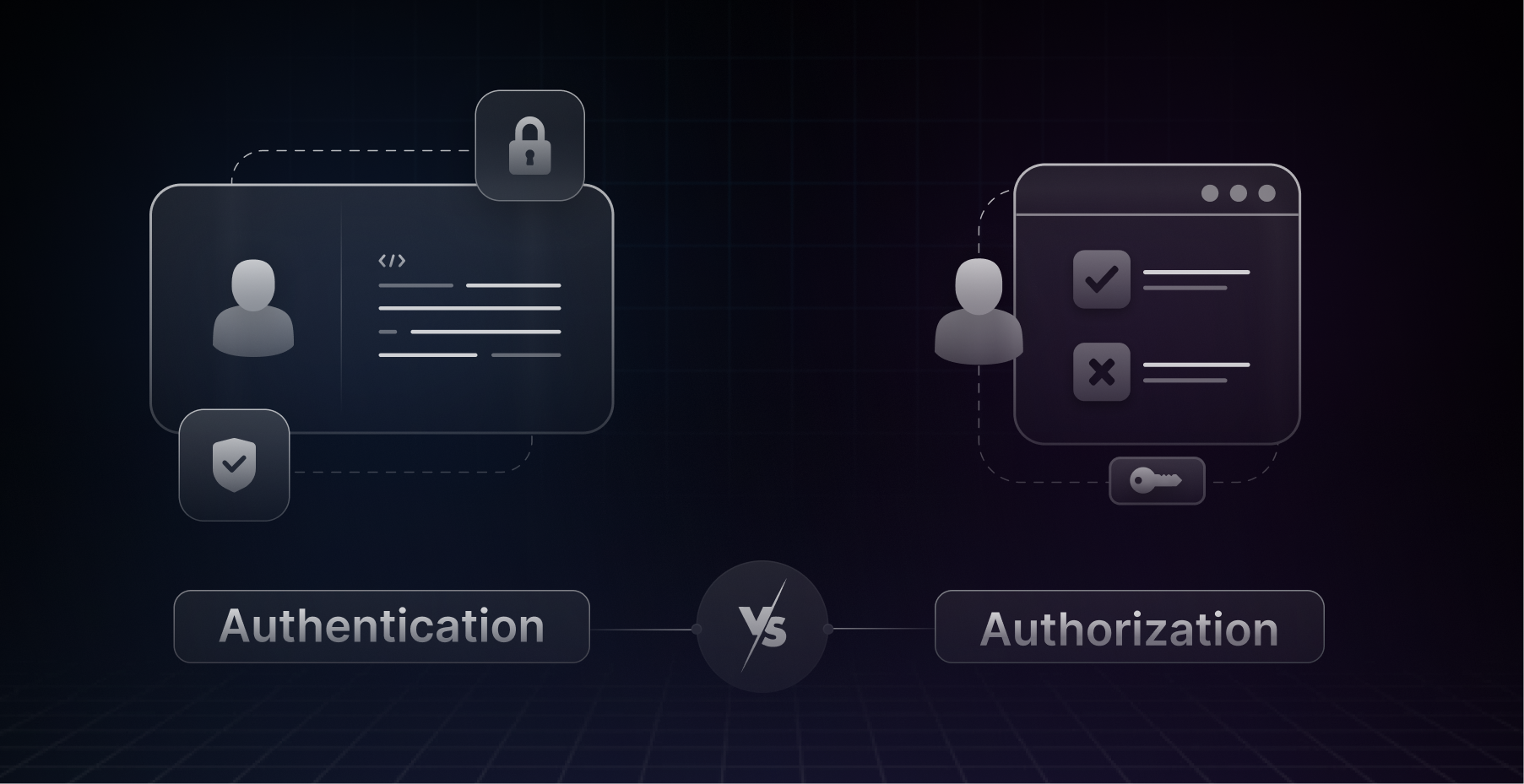Table of Contents
- Introduction
- What is Authentication
- Understanding Authorization
- Why both matter
- Best Practices
- Conclusion
Introduction
Although they are often conflated with each other, Authentication and Authorization represent two fundamentally different aspects of security that work together in order to protect sensitive information. In this blog, we will go over some of the key differences between the two.
The Foundation - What is Authentication?
Authentication is the process of verifying the identity of a user or entity attempting to gain access to a system or resource. It answers the fundamental question, “Who are you?” to ensure that the individual or device claiming access is, indeed, who they say they are. This identity verification process serves as the initial gatekeeper, protecting against unauthorized entry and mitigating threats like unlicensed access.
Common methods of authentication include
- Something You Know: This involves providing a secret, such as a password or an OTP sent through a registered device.
- Something You Have: Utilizing physical tokens like mobile authenticators or usb keys to verify identity.
- Something You Are: Relying on biometric characteristics such as fingerprints, facial recognition for identification.
Understanding Authorization
While authentication lays the groundwork by confirming identity, authorization takes it a step further by determining what actions or resources an authenticated user can access. In simpler terms, authorization addresses the question, “What are you allowed to do?” and defines the scope of a user’s privileges within the system. This level of granularity is essential for protecting sensitive information and controlling data exposure to prevent unauthorized activities. Authorization mechanisms may include:
There are a number of Authorization techniques like attribute and rule based Authorization but one of the most popular methods is role based access control where users are assigned to predefined roles with associated permissions and restrictions based on their job functions. You can learn more about RBAC in our guide
Why both matter
The importance of both authentication and authorization cannot be overstated. While authentication ensures that only legitimate users gain access to a system, authorization guarantees that these users are confined to their respective permissions and cannot perform unauthorized actions.
Imagine a scenario where a user has successfully authenticated but lacks proper authorization controls. This user, perhaps with malicious intent or due to a careless mistake, could inadvertently cause significant damage to critical data or systems, putting the entire organization at risk.
On the other hand, effective authorization without proper authentication is equally problematic. An unauthorized user could bypass authentication measures and gain access to sensitive information, leading to data breaches, financial loss, and severe reputational damage.
Best Practices for a Secure Future
To maintain robust digital security, organizations must implement a comprehensive approach that harmonizes authentication and authorization. Here are some best practices to consider:
- Multi-factor Authentication (MFA): Combine multiple authentication methods to bolster identity verification, reducing the risk of unauthorized access.
- Regular Access Reviews: Periodically review user permissions to ensure they align with their roles and responsibilities, removing unnecessary access.
- Principle of Least Privilege: Grant users the minimum level of access required to perform their tasks, minimizing potential exposure.
- Centralized Identity Management: Adopt centralized identity management systems to streamline authentication and authorization processes across the organization.
Conclusion
Authentication and authorization are the twin pillars that safeguard our sensitive information. Authentication sets the foundation by verifying identity, while authorization fortifies access controls, determining user privileges. The synergy of these two elements creates a robust security framework that protects organizations and individuals alike. By adhering to best practices and staying vigilant, we can confidently navigate the digital landscape with security and peace of mind.
Remember, it’s not just about “Who are you?” or “What are you allowed to do?” but rather the powerful combination of both that establishes a defense against malicious attackers.


